Deckbuilding Primer
Hi friends! Game Director Dave here with a deeper look into how to build a deck for Riftbound. I’ve been playing trading card games for a loooong time and the good news/bad news is that building a deck can be both one of the most rewarding and also one of the most challenging things you can do in a TCG. So let’s dive in to make it a bit simpler!
Discovering the Domains
Riftbound is a game built around six domains - philosophies of power that each champion from the League of Legends universe aligns with (or against), and which defines which cards you can put in that champion’s deck.
The domains are:
-
Fury (Red) -
- Fury is about aggression, passion, and the thrill of conquering.
- Fury decks often use damage-based removal, Accelerate (and other ways to enter ready), and rewards for conquering to achieve victory.
- Generally, Fury cards have a harder time drawing lots of cards or killing units directly, especially units that stay out of combat in their base.
- Examples of Fury from popular fiction are Conan the Barbarian, Blade, and Anakin Skywalker.
-
Calm (Green) -
- Calm is about balance, meditation, and the peace of holding.
- Calm decks often use defensive tricks, moving enemies, and negating interaction (like counterspells and stuns) to defend their holds and achieve victory.
- Generally, Calm cards have a harder time being very aggressive or interacting without using their units.
- Examples of Calm from popular fiction are Gandalf, Baloo, and Obi Wan Kenobi.
-
Mind (Blue) -
- Mind is about innovation, outsmarting opponents, and the benefits of intelligence and curiosity.
- Mind decks often use long-term planning, shrinking tricks, card draw, hidden and gear synergy to gain an advantage and achieve victory.
- Generally, Mind cards have a harder time with moving units or having efficient units.
- Examples of Mind from popular fiction are Sherlock Holmes, Curious George, and Yoda.
-
Body (Orange) -
- Body is about physical superiority, agility, and connection to the wilds.
- Body decks often ramp their resources, play efficient and high impact units, and dominate combats to achieve victory.
- Generally, Body cards have a harder time with finding efficient card draw or noncombat spells.
- Examples of Body from popular fiction are The Terminator, Juggernaut, and Chewbacca.
-
Chaos (Purple) -
- Chaos is about unpredictability, rebellion, and trickiness.
- Chaos decks often manipulate position and the trash, use hidden tricks, and filter toward the right cards to achieve victory.
- Generally, Chaos cards have a harder time permanently eliminating a threat or giving permanent advantages to its units.
- Examples of Chaos from popular fiction are V (for Vendetta), Spiderman, and Han Solo.
-
Order (Yellow) -
- Order is about unity, community, and sacrifice for the greater good.
- Order decks often generate many small units, gain effects on unit death, and kill units directly to achieve victory.
- Generally, Order cards have a harder time dealing with smaller units and moving units.
- Examples of Order from popular fiction are Superman, Cobra Commander, and Leia Organa.
One way to start building a deck is to start with a domain you think fits your playstyle (or just style, generally) and search for cool cards you might want to fit into a deck. But especially in Riftbound, the best way to make a deck is to…
Step 1: Start with the Legend
Remember - the champion determines the domains (colors) of your deck. In Riftbound’s first set, Origins, every champion you can build a deck around has a Legend card with two different domains.
For example, Jinx is Fury-Chaos, and so you can play both Fury cards and Chaos cards (but not, for example, Calm cards) in Jinx.
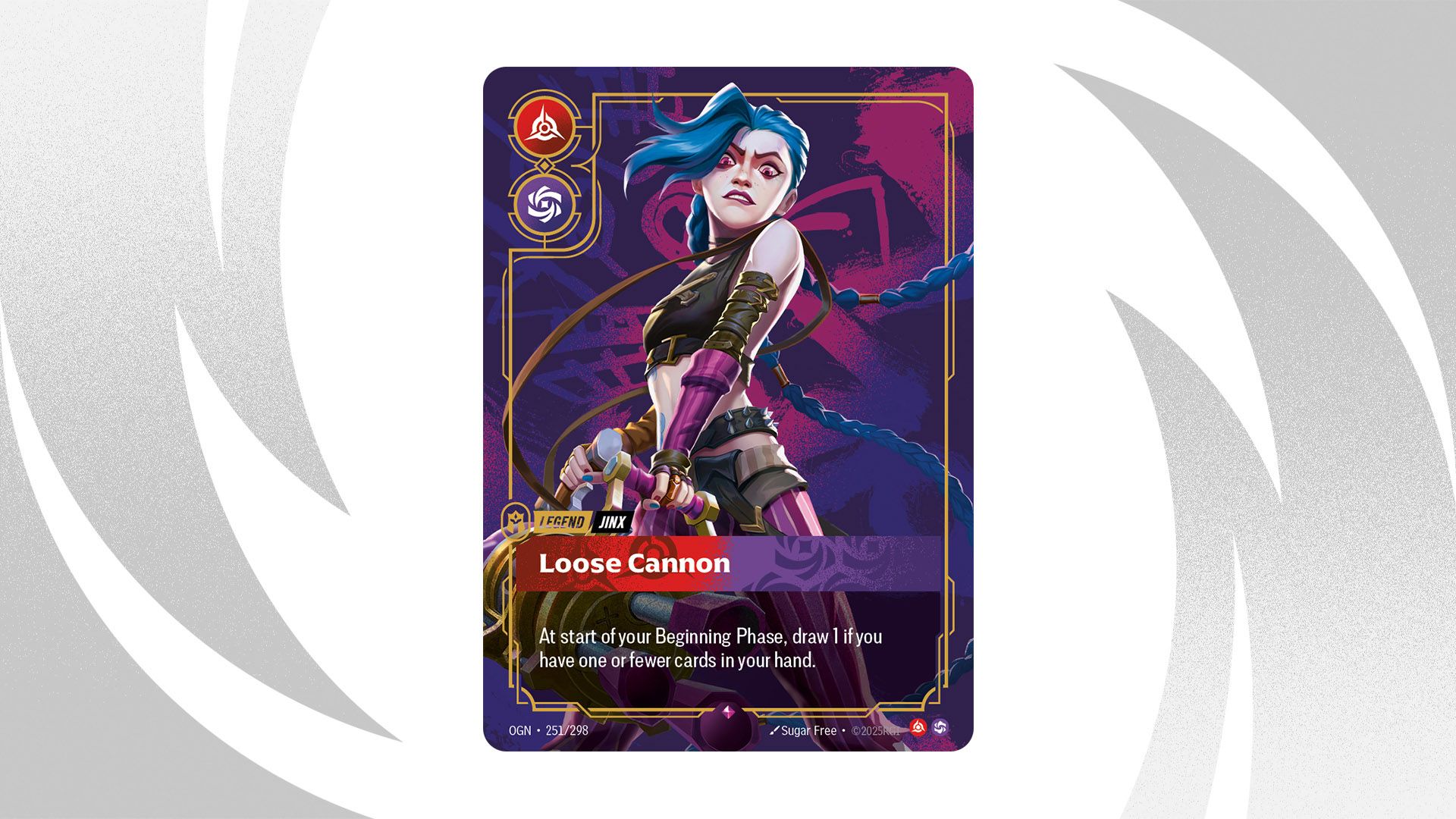
Your legend doesn’t just define which cards you can play - it also has a powerful ability that’s “always on” and can help define your strategy and path to victory. For example, Jinx lets you draw an extra card when you’re almost out, encouraging you to play more aggressively (get cards from hand onto the board) and to find ways to discard extra cards to pay costs to empty your hand quickly.
Once you’ve chosen a legend, that’ll lead to the next decision you need to make…
Step 2: Choose your Champion
In addition to the legend card itself, every champion deck needs to have a Chosen Champion. This is one of the available versions of your legend’s champion unit - in Origins, each legend has two, one for each color. Each one has different abilities that line up with a different piece of the overall deck strategy. Since you’re always guaranteed to have access to this one copy of your Chosen Champion unit, it’s important to think about how you want to build your deck around that champ.
Let’s look at Lee Sin for example -- first let’s review his legend, Blind Monk:

We’ll have access to adding a Buff to one of our units each turn, so how will that play out for each of the Chosen Champion units? Let’s take a look at Lee Sin, Centered, the Body (orange) unit version of the champion:
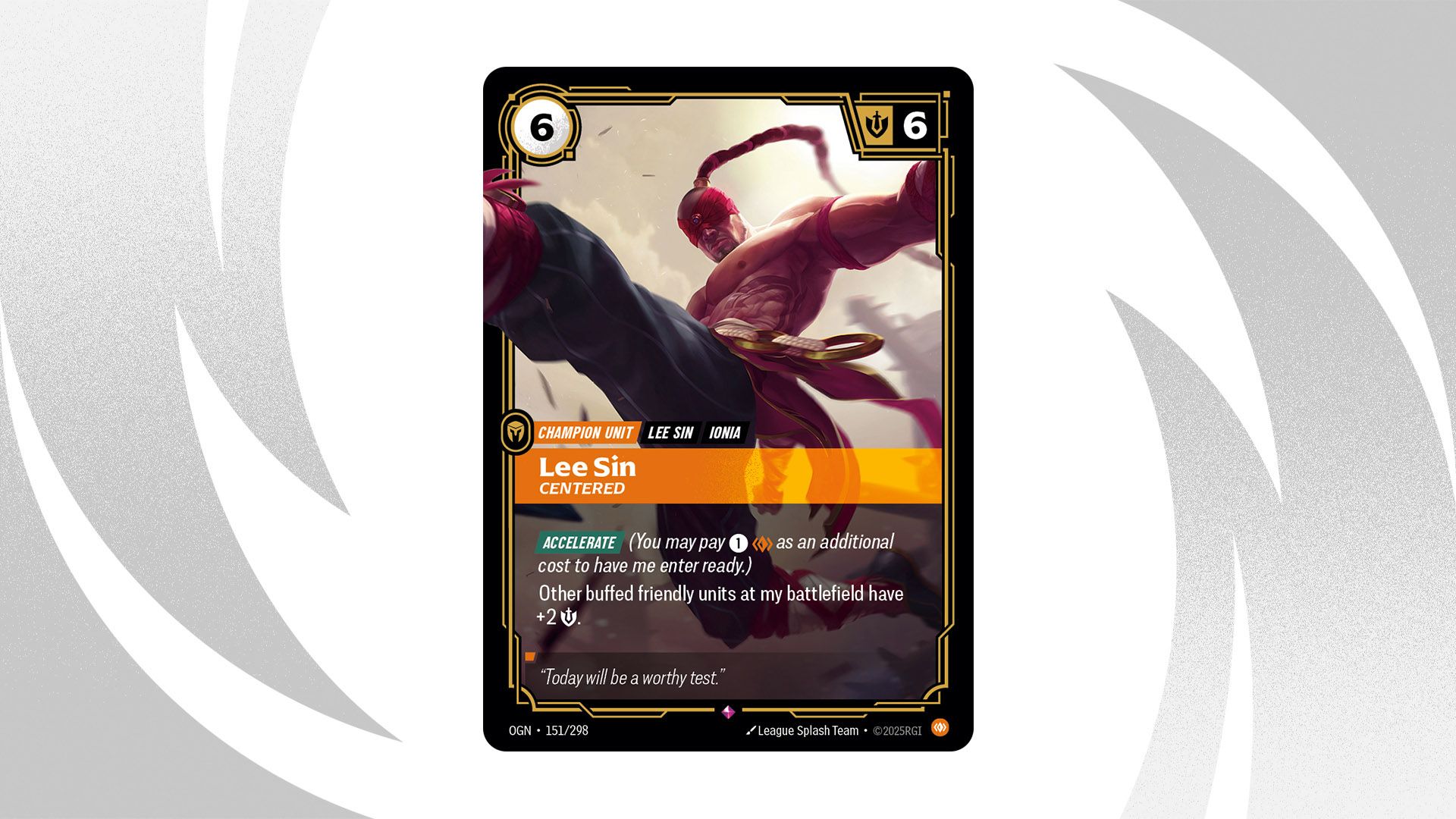
This Lee Sin is about giving other buffed units an additional boost (+2 Might is a lot!). For a deck built around this card, we might want to consider “going wide” and having most units buff themselves. We can use our Legend ability to add an extra buff for units that come without one, or if we spend one.
What about our other option, Lee Sin, Ascetic? Let’s take a look at this Calm (green) unit version of the champion:
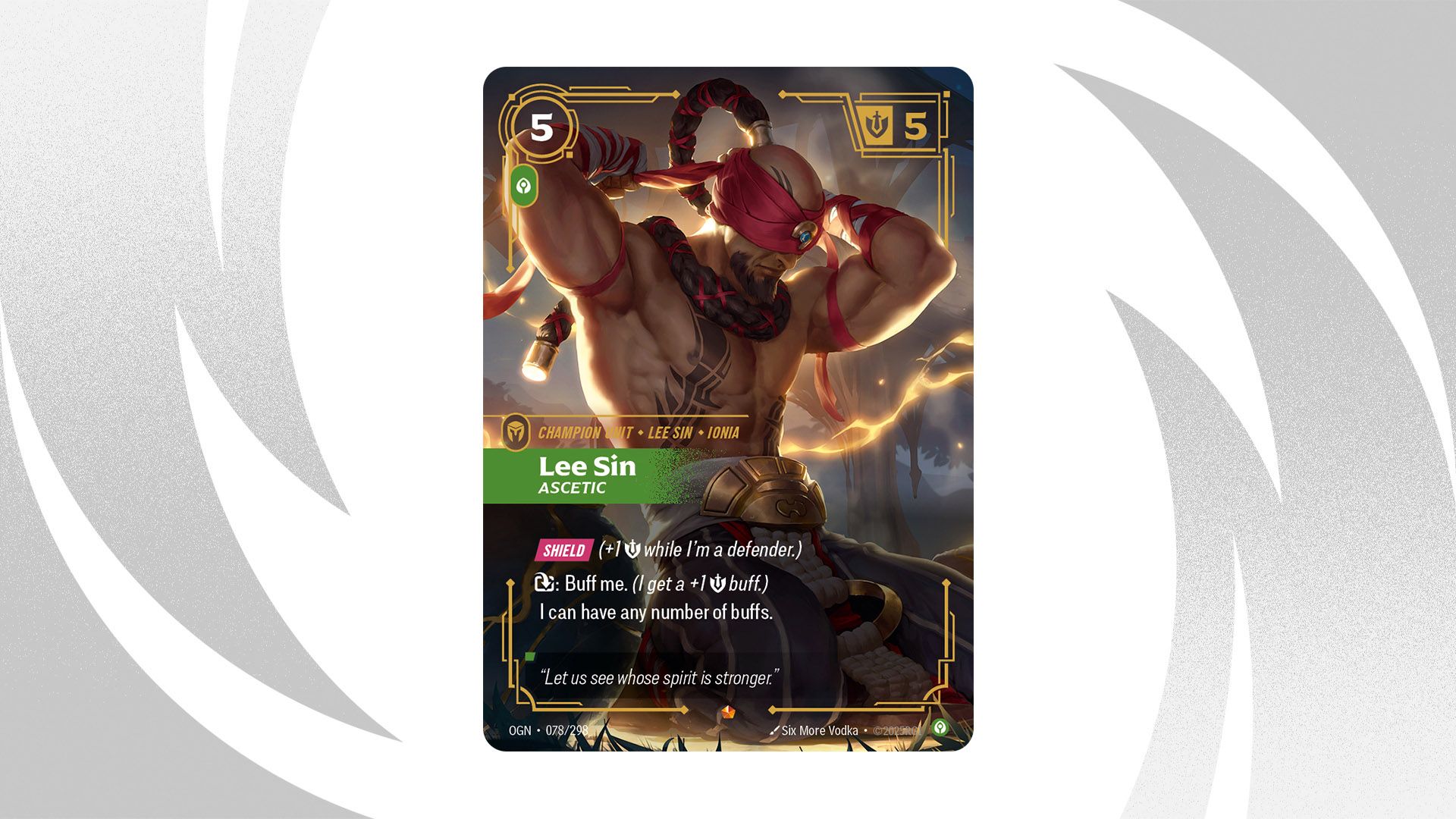
Since this Lee Sin can gain ANY number of buffs, we know we’ll have access to one giant unit to push pressure across the board, and that also means we probably want to be using our Legend ability on THIS unit, not spreading them out like we would in the Body version. This means that players who love Lee Sin have options when deciding what deck strategy they’d like to use for a customized play style.
Each deck built around a specific legend can play both of that legend’s champion units in the Main Deck, so you can blend the strategies, but picking which one is your Chosen Champion is going to lead you down a path of maximizing the usefulness of that “guaranteed” copy you’ll essentially always draw in your games.
Step 3: Signature Cards
The Chosen Champion is the first of your 40* Main Deck cards, and so we need about 36 more - wait, that math doesn’t check out… or does it? You probably want to reserve spots in your main deck for the maximum copies (3) of your champion’s last special card, the Signature card. In Origins, the legends each have a Signature Spell which is both specific to the strategy of that champion’s deck and honestly more powerful than other cards of comparable cost. You don’t always have to play maximum copies of it, but you should have a good reason not to - it'll probably play nicely with your strategy!
[Sidebar: Deck Minimum Size] You can go higher than 40 if you really want to, or if you really can’t cut down your favorites, but generally I recommend against it - it’ll make it less likely you draw into your most powerful cards like your champion and your signature cards!
Let’s take a look at Viktor’s signature spell, Siphon Power:
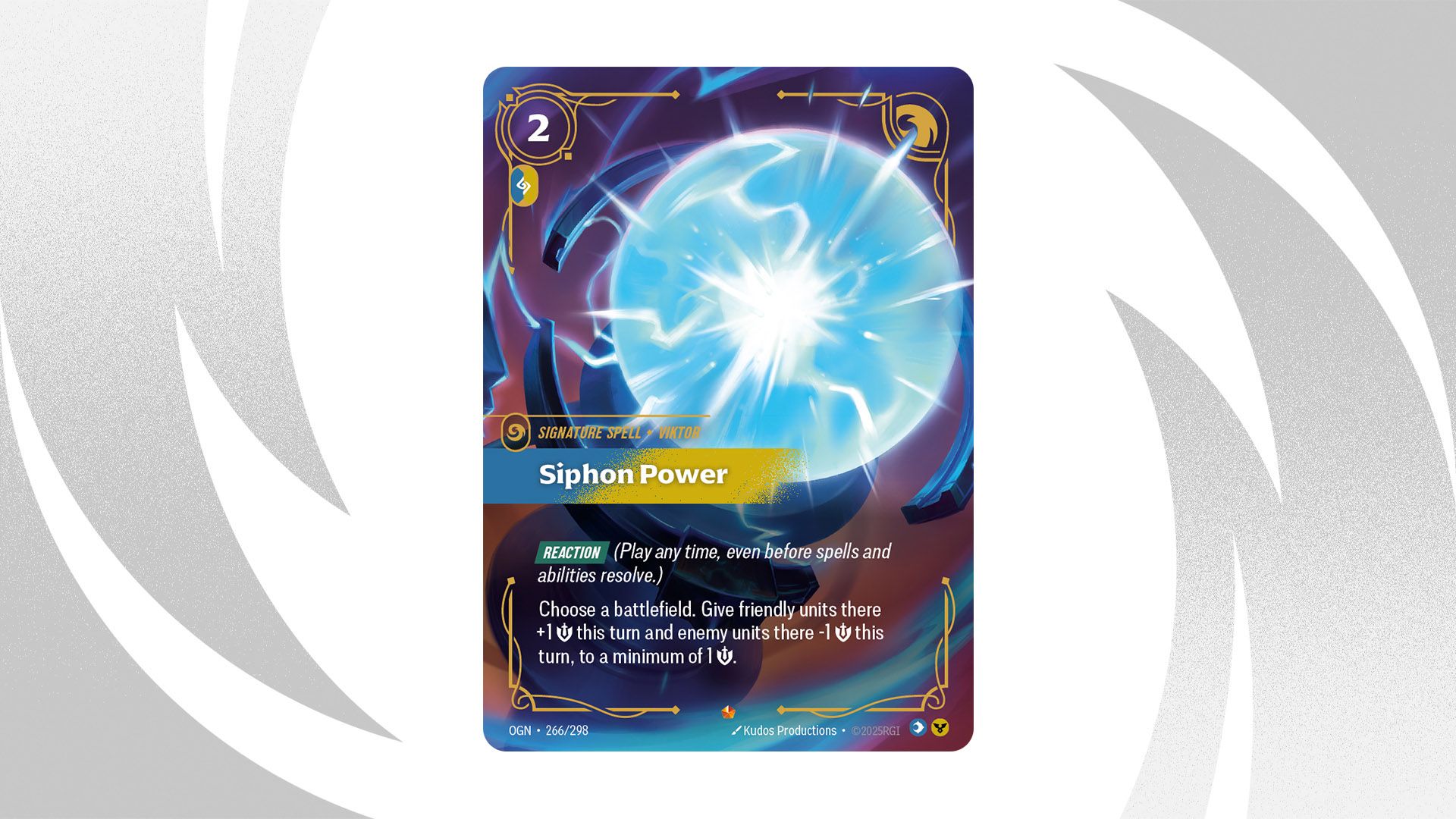
Viktor’s strategy generally involves building an army of small units (including generating Recruit tokens), and then you bring groups of them to battlefields to take them over. When you have a numbers advantage in the combat, Siphon Power is incredibly backbreaking - it’ll almost always swing unfavorable combats to your advantage, and can help you get those key last few points.
Step 4: Filling Out your Main Deck
Wow, there are a lot of potential cards you can put in your deck - any of the cards of your legends’ domains, including other champion units! For any card in your Main Deck, you can play up to 3 total copies of that card (for the Chosen Champion, the copy you start with on the table counts toward this 3 copy limit).
Here are some rules of thumb to consider when you’re filling out the rest of your 40:
- Play more of your champion - It’s generally a good idea to play more copies of your Chosen Champion. After all, you built your strategy around having access to this champion! Sometimes your enemies will deal with your Chosen Champion, so extra copies will be useful.
- Play 9+ small units - You can’t win unless you fight for battlefield control. Usually this means playing a large number (9+) of 2-4 cost units, enough that you can reliably draw one by your first or second turn. (If you have a legend power that helps with early game battlefield control, like Viktor’s, then this is less important.)
- Play 6+ interactive spells - You’ll have a rough time winning combats if you don’t have “interactive” spells. These are spells that can improve your own units, reduce the effectiveness of your enemies’, and/or just straight up remove enemy units. To be sure you reliably draw one by the middle of the game, you should run a significant number (6+) of these. (If you have signature spells that help with this, then you may already have some of the 6.)
- Don’t overload with spells and gear / When in doubt, play more units - Don’t overload your deck with spells and gear. You need units, and especially strong ones like champions, to contest battlefields. The spells and gear are more supports for your board presence on battlefields.
The rest of the cards you play will be based on your strategy and the way you expect to win games. Remember, to win a game of Riftbound, you have to be capable of holding a battlefield or scoring many on the same turn. That usually means substantial defensive units and spells, or substantial aggressive forces you can build up in the late game.
If you’re new to deckbuilding, this can be a bit overwhelming! That’s okay - you can start with one of the decks we built for you, like the Champion preconstructed decks, and adjust card by card until it starts to play the way you want it to. In the instruction books included with those decks, there are also some tips for upgrading them with stronger cards!
Step 5: Your Runes
What about your Rune Deck? We haven’t talked much about that. Well, as you select cards for your Main Deck, pay attention to the power costs of those cards. It sometimes makes sense to try to “skew” your balance of power across your two domains to make it easier to ensure you’ll hit the runes you need at the times you need them - for example, play mostly zero-power cards in one domain, and the heavy hitting multiple-power cards in the other. If you do this, you can try something like an 8-4 split in favor of the high-power-cost domain.
You can also consider running the Seal cards for that domain, because Seals help pay many power (recycle) costs of a domain over multiple turns. If you have a higher quantity of cards that need them in that domain, Seals could be a good choice.
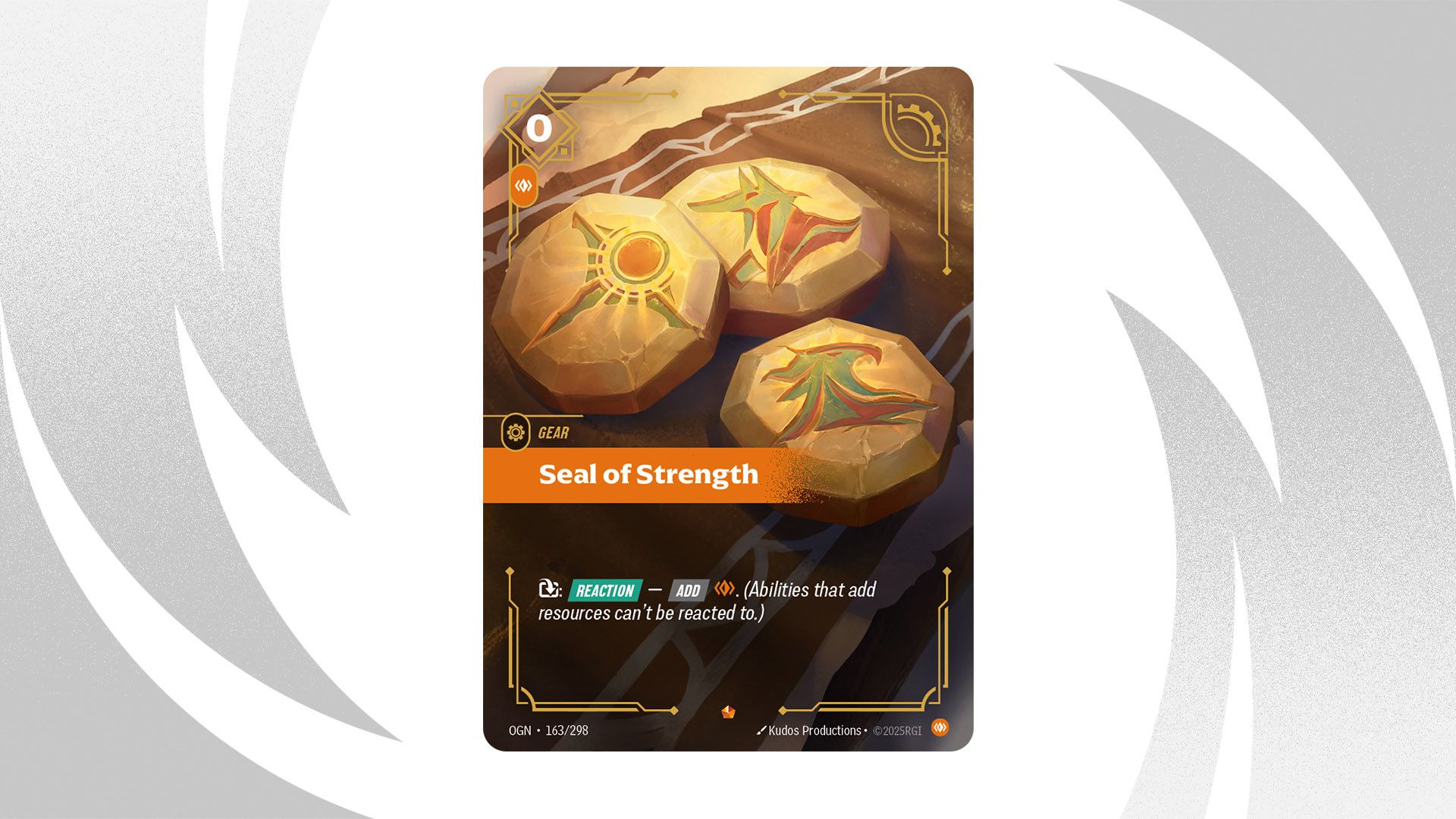
But generally a good start is a 6-6 split across your two domains, and tweak it as you play and see if you feel like you’re missing runes of a particular domain.
Step 6: Pick your Battlefields
The last thing you’ll probably do to finish your deck is pick your three distinct battlefields. There are 20 colorless battlefields to choose from in Origins which means you can pick ANY of them for any deck. To help narrow it down, ask yourself these questions:
- Which battlefields do the most to support my strategy?
- Which battlefields would be disastrous for my strategy if my enemies were able to control them?
- Which battlefields would be slightly better for me than my enemies?
That should help guide you toward the three best battlefields for your deck!
A Practical Example: Lee Sin’s Champion Deck

Let’s talk about this Lee Sin deck and how it was built, and what it’s trying to accomplish, and how you might go about improving it.
First, its Chosen Champion is Lee Sin, Centered. As we discussed above, this means it’s looking to go a bit more “wide” and build an army of units rather than one monstrous one. We can see there’s a lot of units, many of whom are not generating buffs themselves so they can benefit from the Blind Monk legend ability.
Notably, many of the units in this deck don’t necessarily have buffs themselves but get WAY better once you apply buffs - Bilgewater Bully, Wizened Elder, and of course Udyr. As you consider upgrades/changes to this deck, try to find cards that get extra benefits from the Blind Monk buff, or that might want to spend that buff repeatedly.
Importantly, this deck is running a few spells and gear that help you win combats (like Stand United or Discipline), or start fights that you should be able to win (like Challenge or Charm). Remember one of our rules of thumb - you gotta fight for battlefields to win the game, so that means you want to have ways to surprise your enemies and gain the upper hand in those combats.
Finally, there are two specific cards here - Mistfall and Wildclaw Shaman - that address a particular weakness of this kind of strategy: it can be a bit slow to build up an unbeatable fighting force. Versus faster decks, like Jinx, or versus decks that can go even wider, like Viktor, Lee Sin can have trouble coming back from behind… and that’s where the ability to have instantly ready units because of Lee Sin’s buffs comes in and lets you pressure battlefields even from a losing position. As you consider how to improve the weaknesses of this deck, try to find other cards that let you come from behind or leverage an army that is “stuck” defending one battlefield when you need to get to another.
That’s Deckbuilding!
That’s all for now - pick your favorite legend and try it yourself! One of the best ways to build decks is to make a “rough draft”, play it versus friends or at your local store, and use your learnings from that game (what was strong? What was weak?) to improve into the next iteration. See you and your new deck on the Rift!
Jinx Champion Deck
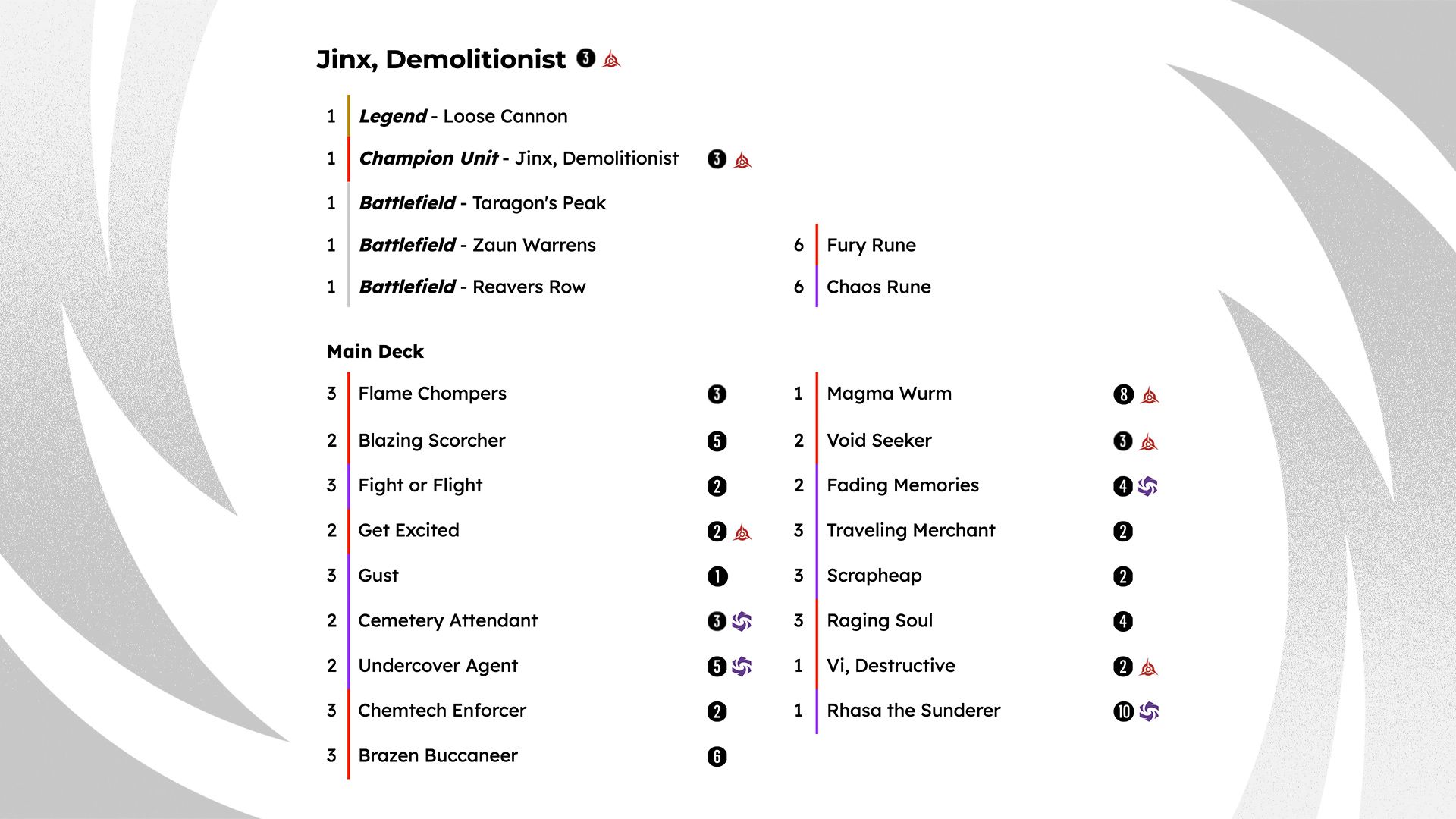
Viktor Champion Deck
